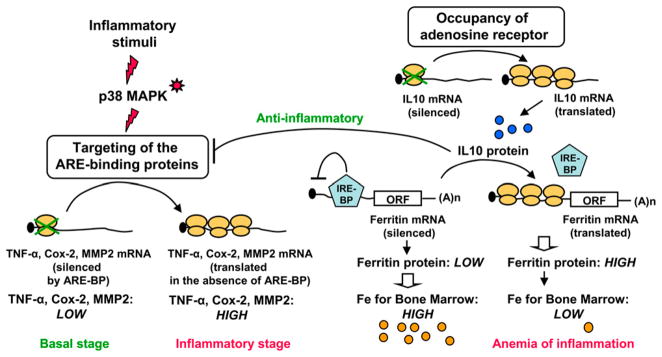FIGURE 1.
Pro- and anti-inflammatory axis of IL-10 depends on translation regulation. Left, Inflammatory stimuli activate p38 MAPK that disengages ARE binding proteins and derepresses the translation of inflammatory proteins. In a global anti-inflammatory role, IL-10 negatively regulates this process by abrogating the activation by p38 MAPK. Right, Occupancy of the adenosine receptors by its ligands relieves the imposed translational repression of IL-10 mRNA and activates the synthesis of IL-10 protein (blue circles). As a proinflammatory molecule, IL-10 stimulates ferritin translation by removing the translational repressor (the iron response element-binding protein) from 5′ UTR. Overproduction of ferritin causes sequestration of available iron (rust-colored circles) for bone marrow, leading to the characteristic anemia of inflammation.

